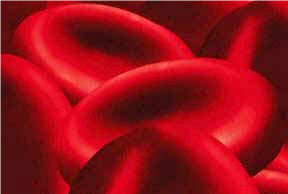
Blood Components
Blood is a liquid tissue in the human body that provides a wide array of life supporting functions, including:
- Delivers oxygen, hormones, nutrients, vitamins and minerals to your body and picks up cellular waste products to be eliminated.
- Contains elements that prevent blood loss by healing wounds.
- Acts as the primary carrier of immunity functions.
The vital tissues and organs in the body depend on blood for normal healthy function, and most are involved in the continuous processing of blood.
Mouse over the picture below to learn more about different blood components:
What is the function of blood?
It might help to think of blood as a passenger train that carries the vital elements that sustain life; including oxygen, nutrients, vitamins and minerals. The vessels of the circulatory system function as the railways in which the train will travel, and the organs and tissues in your body are the train stations where passengers can get off and on the train.
As blood leaves the heart and flows through the arteries, it passes through a network of tiny capillaries that facilitate the exchange of oxygen and nutrients to the cells in the organs and tissues of the body. In addition, waste products are collected by the blood and carried to the organs that are responsible for removing them from the body.
History of blood in medicine
Click on each timeframe below to reveal the discoveries…
Magical Views of Blood 2500BC-1200AD
- Blood was viewed as a magical substance influenced by the balance of the universe.
- People believed illness was caused by supernatural sources.
- Hippocrates thought the imbalance of bodily fluids, including blood, caused disease.
Scientific Discoveries 1200AD-1700
-
The circulatory system and the movement of blood through the body was discovered during the first human autoposies.
-
The first known blood transfusions were performed, between animals and humans.
-
Red blood cells were discovered.
Scientific Advancement 1700-1920
-
In the early 1800s a British obstetrician began human blood transfusions, to try to reduce the high mortality rates during childbirth.
-
Two critical advancements in the early 20th century allowed blood collections and increased the success rate of transfusions:
-
Scientist Richard Lewisohn developed a glucose solution that allowed blood to be collected and stored.
-
Scientist Karl Landsteiner discovered that people have different blood types and named them A, B and
-
- Initial success rates of human to human blood transfusions were low.
Large Scale Storage and Usage of Blood 1920-1950
- World War I (1914 -1918) and World War II 1(939 -1945) demanded the increased storage and usage of blood.
-
In the 1930s blood donation services began, and the first blood banks were developed by American and Soviet Union doctors.
-
Organized blood centers were established throughout the world, to provide transfusion medicine to civilians and military personnel.
-
Blood was separated into its different components to provide a variety of treatments to patients.
Further Scientific Exploration and Regulation 1950-Present
-
Great strides were made in transfusion medicine, tremendously increasing transfusion success rates.
-
It was discovered that viruses, such as HIV and Hepatitis C, could be passed through blood transfusions.
-
Due to the increased use of blood transfusions, and the associated risks, government regulation increased under the Food and Drug Administration (FDA).
-
Blood became regulated as a drug by a branch of the FDA call the Center for Biologics Evaluation and Research (CBER).
-
New tests were developed to detect viruses and bacteria, creating the safest blood supply ever.
-
Drug products were developed through further processing of blood.

